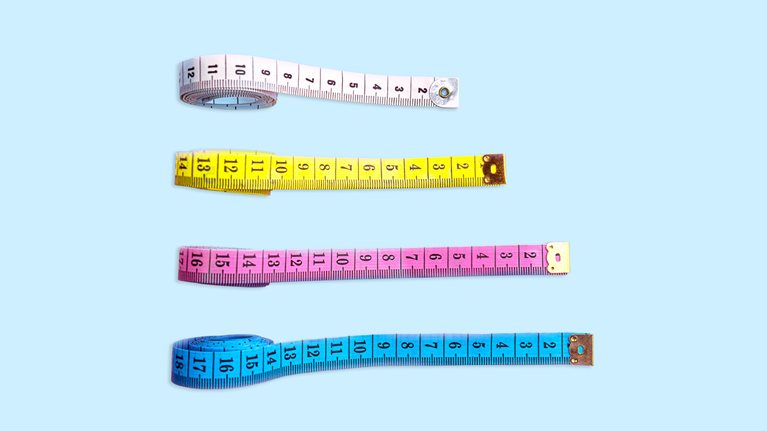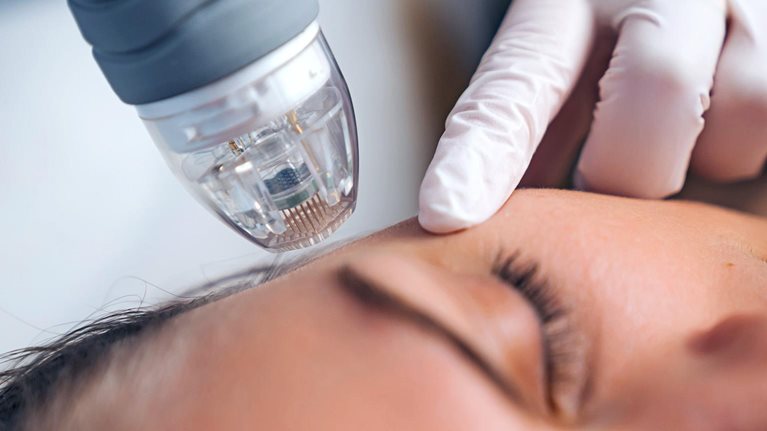
While you may have heard the term only recently, glucagon-like peptide-1 (GLP-1) drugs have been on the market for more than a decade. Beginning in the 2000s, doctors primarily prescribed GLP-1s to help treat type 2 diabetes. But in late 2023, GLP-1s began making headlines for their success in helping people lose weight. Ozempic, Wegovy, and other brands started to become household names and sales rapidly accelerated. As of February 2025, there are 11 GLP-1s on the market with indications for diabetes and weight loss, and more than 40 others in the pipeline.
GLP-1 drugs can help people lose weight. But they’re also changing people’s behavior. For more on GLP-1s and their possible impacts, read on.
Learn more about the McKinsey Health Institute and McKinsey’s Public Health practice.
How do GLP-1s work?
Get to know and directly engage with senior McKinsey experts on GLP-1s
Hemant Ahlawat is a senior partner in McKinsey’s Zurich office; Jeffrey Algazy is a senior partner in the New Jersey office; and Rob Linden is a senior partner in the Bay Area office.
GLP-1 drugs mimic the action of the GLP-1 hormone, which is produced in the gut in response to eating. GLP-1 typically slows gastric emptying, increases insulin production, and increases satiety: that is, the feeling of fullness. GLP-1s and other drugs that mimic the hormone’s effects can slow the processing of food and increase satiety, both of which contribute to weight loss.
When people refer to GLP-1s, they are talking about either “simple” GLP-1s or GLP-1 combination therapies. Simple GLP-1s, or GLP-1 receptor agonists, bind themselves to naturally occurring GLP-1 receptors in the body. These drugs, such as Wegovy, were the first to come to market in the mid-2000s. GLP-1 and gastric inhibitory polypeptide (GIP) combination therapies are a more recent development. These medications, such as Zepbound, target both GLP-1 and GIP hormone receptors. They provide patients with enhanced therapeutic benefits, including additional metabolic improvements and more significant weight loss.
How effective are GLP-1s?
GLP-1 drugs help people to both manage their diabetes and lose weight. Across four studies of more than 3,000 participants over two years, one-third experienced weight loss of more than 20 percent of their baseline. The majority—70 percent—experienced at least 10 percent weight loss.
Once patients stop using GLP-1s, evidence suggests they gain back some of the weight they lost. One study indicates that patients regain as much as two-thirds of the weight lost in the year after discontinuing their use of the drug.
Learn more about the McKinsey Health Institute.
What are the side effects of GLP-1s?
By slowing gastric emptying, GLP-1 drugs can cause gastrointestinal symptoms. These can include nausea, abdominal pain, and vomiting. Less common but more severe side effects can include pancreatitis and stomach paralysis. Some patients stop taking GLP-1s because of the side effects; up to two-thirds of patients stop taking GLP-1s within a year of starting.

Looking for direct answers to other complex questions?
GLP-1s cause patients to lose both fat mass and muscle mass. This can have adverse implications, because muscle helps with not only strength and endurance but also energy regulation and metabolism. Loss of muscle mass in older people can contribute to frailty, including an increased risk of falls. Some pharmaceutical companies are starting to work on solutions to preserve muscle as a complement to GLP-1 use.
How may GLP-1s influence patients’ habits and behaviors?
It’s too soon to tell. But according to McKinsey Partner Anna Pione: “It will be interesting to look out for the complementary product and service offerings that may spring up to help consumers meet their health and nutrition needs while they’re taking GLP-1 prescription medication, as well as supplements: things like nutrition bars that help consumers meet their macro needs, lifestyle coaching services that help consumers ensure they’re getting the right nutrients, or fitness routines around their medication.”
Those who have used GLP-1s have already seen an impact on their calorie consumption. One clinical study found that patients on GLP-1s reduced the calories they consumed during meals by up to 40 percent. This finding demonstrates that GLP-1 use can affect consumer food habits, along with other recent evidence that GLP-1 users are beginning to shift their purchasing behaviors because of the medication, through both product selection and volumes.
According to some studies, consumer spending on and the volume of grocery items such as hot sauce, sugar substitutes, canned fruit, and dried fruit or fruit snacks were higher in households with users of GLP-1s in 2023, compared with 2022. When it comes to beverages, households with GLP-1 users shifted toward sports and energy drinks. (Other studies about beverage consumption, however, have indicated different results. More conclusive trends are likely to emerge as more data on GLP-1 use becomes available.)
What’s the market size for GLP-1s?
Nearly one in three adults in the United States, or about 100 million people—and 900 million people worldwide—meet the clinical criteria for obesity. Obesity increases the risk of many other diseases, from type 2 diabetes and depression to cancers and dementia. Because many people who meet the criteria for obesity would like to lose weight, there is a high demand for these drugs.
According to McKinsey’s latest Future of Wellness research—which surveyed more than 5,000 consumers across China, the United Kingdom, and the United States—60 percent of US consumers say they are currently trying to lose weight. And the majority of these consumers believe GLP-1 drugs work: More than 50 percent of US consumers consider prescription medication to be a “very effective” intervention that supports weight management.
In 2024, quarterly sales of three GLP-1 drugs grew to more than $4 billion. McKinsey estimates that treatment of metabolic and endocrine-related diseases (via GLP-1 drugs) will have greater revenue growth than any other therapeutic area through 2028. The population of patients meeting clinical eligibility criteria for GLP-1s is one of the largest of any new drug class in the past 20 to 30 years (exhibit). McKinsey also estimates that up to 5 percent of the US population could be prescribed a GLP-1 by 2030, for a variety of diseases including cardiovascular, inflammatory, and neurogenerative.

How will GLP-1s affect the medical device market?
The growing popularity of GLP-1s for weight loss has prompted investors to move away from obesity-related medical devices. Margins have increasingly become a point of focus for valuations in the industry, and medtech’s profitability did not meet investor expectations in 2023. In the months after trial readouts for GLP-1s indicated their potential to treat obesity, medtech stocks dipped 17 percent amid concerns that GLP-1 use would dramatically reduce the need for device-enabled diagnostics and interventions.
Despite this, McKinsey expects that over the long term, GLP-1s will have a minimal effect on most medtech markets. The long-term success of GLP-1 therapies will depend on patient adherence to the medication, as well as payer coverage and prescription rates. McKinsey analysis across multiple scenarios suggests that for most indications across medtech sectors, low-single-digit percentages of patients will become long-term users of the therapy. But GLP-1s are the talk of the industry, so medtech companies should consider their approach when describing the potential business impacts.
McKinsey also predicts the surge in popularity of GLP-1s will create new opportunities in the pharma supply chain. Demand for GLP-1 autoinjectors is expected to create a large market for device or syringe technologies, primary containment components, and raw materials across the value chain by 2028. Medical players could consider investing in companies that specialize in these technologies, through either traditional M&A or carveouts. At some point, we also expect to see the launch of oral GLP-1s, which will affect demand for GLP-1 injectables and other key pharma segments.
How are GLP-1s affecting the medical-aesthetics sector?
GLP-1s are changing patients’ appearances—and creating new demand for aesthetic products and services. McKinsey research indicates that GLP-1 therapies are expanding and changing the aesthetics customer base. Based on a survey of 174 medical spas, dermatology clinics, and other providers, we found that 63 percent of incoming patients who had taken GLP-1 therapies were not already consumers of medical-aesthetics services. In fact, roughly half of these patients had never considered aesthetics prior to their weight loss.
To capture and sustain this growth, medical-aesthetic-industry players should understand the four defining traits of this group of people:
- GLP-1 patients have diverging aesthetic objectives. There is a roughly even split between patients who want to achieve a more “natural look” and those who wish to explore new looks and topical techniques.
- Many GLP-1 patients have multiple aesthetic concerns. Weight loss can lead to common aesthetic concerns such as loose skin and facial volume loss. Aesthetic providers report that most GLP-1 patients are seeking treatment for two or more skin concerns, including skin laxity and skin quality.
- New techniques and combination therapies may be required to address the needs of GLP-1 patients. Medical-aesthetic providers report that traditional treatments may not be fully sufficient to treat these patients’ primary concerns. Nearly half of them are excited to try combination therapies or novel technologies, including radio frequency microneedling and mRNA for collagen replacement therapy.
- The financial outlook for GLP-1 patients seeking aesthetic treatments is mixed. Many GLP-1 patients are highly motivated to improve their appearance. But the cost of ongoing GLP-1 therapy—which often exceeds $1,000 per month—has created budgetary constraints. About 60 percent of patients report a reduction in overall discretionary spending. But another 40 percent say they have increased their spending on aesthetic treatments.
GLP-1s represent a medical milestone in treating patients with diabetes and obesity. They stand to help millions of patients all over the world achieve greater longevity and a better quality of life. The leaders of pharmaceutical companies, as well as organizations working in medicine more generally, can act now to ensure they are keeping up with the socioeconomic shifts that the GLP-1 era could bring.
Pop quiz
Articles referenced:
- “The path toward a metabolic health revolution,” May 20, 2025, Anas El Turabi, Drew Ungerman, Hemant Ahlawat, and Lars Hartenstein
- “GLP-1s are boosting demand for medical aesthetics,” May 15, 2025, Leigh Jansen, Nils Peters, and Olivier Leclerc with Lauren Davis
- “From discovery to delivery: Finding an investment edge in biopharma services,” January 29, 2025, Clay Bischoff and Jeff Smith, with Anisha Mathur Hammer and Jeff Morell
- “What to expect in US healthcare in 2025 and beyond,” January 10, 2025, Shubham Singhal and Neha Patel, with Ankit Jain
- “Charting the path to patients,” January 9, 2025, Guang Yang, Jeff Smith, Lucy Pérez, and Valentina Sartori, with Amelia Chang and Ling Liu
- “How biopharmaceutical leaders optimize their portfolio strategies,” January 9, 2025, Guang Yang and Jeff Smith, with Emily Wingrove and Eva Lopez Vidal
- “Rescuing the decade: A dual agenda for the consumer goods industry,” June 11, 2024, Jessica Moulton, Pavlos Exarchos, and Warren Teichner
- “What’s new in consumer wellness trends?,” May 16, 2024, Anna Pione
- “Consumers: Spending more to buy less,” February 16, 2024, Christina Adams, Kari Alldredge, and Warren Teichner
- “What to expect from medtech in 2024,” February 7, 2024, Karsten Dalgaard, Gerti Pellumbi, Peter Pfeiffer, and Tommy Reid
- “The trends defining the $1.8 trillion global wellness market in 2024,” January 16, 2024, Shaun Callaghan, Hayley Doner, Jonathan Medalsy, Anna Pione, and Warren Teichner
- “Healthcare’s next chapter: What’s ahead for the US healthcare industry,” December 19, 2023, Shubham Singhal and Drew Ungerman



